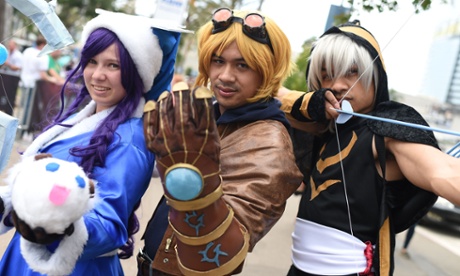
This month, a professional Hearthstone tournament in Finland caused outrage with a rule stating “The participation is open only to Finnish male players.” The organisers quickly point out that it wasn’t their fault - the event was a qualification round for the International e-Sports Federation (IeSF) World Championships, an annual esports event that segregates its competition into male and female events.
Or at least it used to. Responding to the subsequent online furore, the IeSF quickly created two event categories, one open to all entrants and another reserved for women
The resulting discussion has centred around whether having a separate competition will actually help increase female participation in esports. A great number of the comments I’ve seen which disagree with the change have argued that if women were interested in or capable of playing at a professional level they would do so – basically that esports is a pure meritocracy and that there are no external factors at work whatsoever.
Game developers and tournament organisers tend to acknowledge that the number of women in the general player base isn’t reflected in the professional scene – SuperData Research estimates a 70/30 split between men and women in games commonly used as esports, such a League of Legends and StarCraft II, but on the professional circuit the ratio skews heavily toward male. However, those developers and tournament organisers shy away from solutions like the IeSF’s.
“Since the LCS is very much based on ability, we can’t really lobby to encourage people to participate unless they are at the same standard as the other competing teams in the Challenger Series,” said a spokesperson for League of Legends, the mulitplayer online battle game that has become one of the biggest titles in global esports.
Tournament organiser Gfinity’s Paul Kent acknowledges that the sector is currently male dominated and says that the organisation actively engages with its female community members but has stated that “we’re against positive discrimination”.
Valve didn’t respond to our email but previous rulesets for its International competition have stated “he/she” when referring to competitors.
Educating gamers
Looking at the fruits of this general attitude – a European LCS with no female members, a SMITE EU kick-off tournament with no female competitors, a stage devoid of professional female gamers at Dota 2’s recent multimillion dollar TI4 competition – it can feel like a problem with no solution. But looking at the tournaments themselves is not the most helpful way to approach this. Hope for a more gender-balanced pro gaming scene comes in the form of community efforts and projects aimed at younger players.
The High School Starleague is a US organisation which supports students in setting up gaming clubs. Speaking to Red Bull recently, media relations director, Alex Hsu said, “I know you’d expect it to be primarily men, and that’s true, but there are a surprising amount of teams who are all-female or who have female leaders, which is encouraging to see.” Girls make up about seven per cent of their current rosters and that number is on the rise.
League of Legends is also building relationships with university gaming clubs and supporting regional tournaments, aiming to make the game more accessible to everyone. “With this growing support, popularity and accessibility, we do expect to see women joining teams and challenging convention in esports,” a company spokesperson told us.
Todd Harris, co-founder of Smite developr Hi Rez Studios, points out that they employ female competitive gamers as visible community spokespeople. The studio also features female competitive community members on its Twitch livestream and co-promotes female pro players like AshhBearr of COGnitive XX on its community channels.
The Electronic Sports League (ESL) sent over a statement by managing director Heinrich Zetlmayer explaining that it’s more about ensuring women feel just as welcome as men and don’t run the risk of harassment at events. He adds that, “On one hand it’s a matter of time, but on the other, as an industry, we need to be as proactive as possible. If you look at ESL for instance, we’re seeing more women in our company in leadership roles. And that’s not because we have a quota or something but because they all go beyond the call of duty to truly bring ESL to the next level.”
Tammy Tang, leader of all-female Dota 2 team PMS Asterisk* helps run the Female Dota 2 website which is aimed at connecting teams and gamers. “I think that getting females into pro gaming starts from introducing them to the basics of competitive gaming and being part of a proper team,” she says. “I’d like to eventually see inspired and motivated females move on from the Female Dota 2 SEA League and actually get recruited into male competitive teams and eventually pro teams.”
The lack of women in the top tier of professional gaming won’t change overnight, but the efforts being made to increase accessibility are encouraging. Hopefully in the next few years we’ll see the results filtering through in the form of a pro scene better representative of the player base.
- Call of Duty v the planet: inside the world of competitive gaming
- Starcraft: how Day[9] became the biggest star in esports

